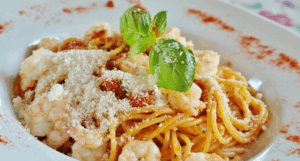Unlocking the Enchanting Secrets: The Intriguing World of Blue Lotus Tea.

In the realm of botanical wonders, Blue Lotus tea, scientifically known as Nymphaea caerulea, stands as a captivating and enigmatic flower with roots deeply embedded in history and culture. From ancient civilizations to modern holistic practices, the allure of Blue Lotus transcends time, offering a unique journey into its fascinating world.
A Botanical Odyssey Through Time:
Blue Lotus tea has a rich history, finding mention in ancient Egyptian texts, where it symbolized spiritual enlightenment and was associated with divine deities. Depictions of the flower can be found in ancient art and hieroglyphs, illustrating its cultural significance. Its ceremonial use in religious rituals and as a symbol of transcendence reflects the enduring fascination humans have held for this mystical bloom.
The Botanical Marvel:
Nymphaea caerulea, a member of the water lily family, graces various water bodies across Africa and parts of Asia. What makes it particularly interesting is its unique adaptation to changing light conditions. The flower opens in the morning sunlight and closes as the day progresses, mirroring the sun’s journey across the sky. This daily ritual has not only captivated botanists but has also contributed to the flower’s symbolism in cultural narratives.
The Chemistry of Serenity:
What truly sets Blue lotus flower tea apart is its composition. The flower contains compounds like aporphine and nuciferine, believed to induce feelings of tranquility and relaxation. Ancient Egyptians and other cultures harnessed these properties by creating teas and tinctures for ceremonial and medicinal purposes. Today, enthusiasts continue to explore the potential therapeutic benefits of Blue Lotus flower, seeking natural remedies for stress and anxiety.
Blue Lotus in Modern Culture:
In contemporary times, Blue Lotus Tea has found a renewed interest among wellness seekers. Its infusion into teas, tinctures, and essential oils has become popular, with proponents attributing various health benefits to its consumption. From promoting better sleep to reducing stress, the versatile applications of Blue Lotus align with the growing trend towards holistic well-being.
A Floral Elixir:
The preparation of Blue Lotus tea is an art in itself. The delicate petals are carefully harvested, dried, and then infused in hot water to unlock their therapeutic essence. The resulting tea is often described as subtle, with a mild flavor profile that carries a hint of sweetness. As enthusiasts sip on this floral elixir, they embark on a sensory journey that transcends mere consumption, fostering a connection with nature and centuries-old traditions.
Cultural Symbolism and Spiritual Significance:
Beyond its chemical composition and physical beauty, Blue Lotus flower tea holds profound cultural and spiritual symbolism. In Hinduism and Buddhism, the flower is revered as a symbol of purity and enlightenment. Its presence in religious ceremonies and depictions in sacred art further solidify its place in spiritual narratives. The lotus’s ability to emerge from murky waters, unblemished and pure, serves as a powerful metaphor for spiritual growth and transcendence.
Challenges and Conservation:
Despite its enduring appeal, Blue Lotus faces threats to its natural habitat and sustainability. Overharvesting, habitat loss, and pollution pose significant challenges to the preservation of this botanical treasure. Conservation efforts are crucial to ensure that future generations can continue to marvel at the beauty and experience the cultural and therapeutic benefits of Blue Lotus Tea.
Exploration and Ethical Considerations:
As interest in Blue Lotus Tea grows, ethical sourcing and sustainable practices become paramount. Responsible cultivation and harvesting methods are essential to maintain the delicate balance between human utilization and ecological preservation. Enthusiasts and producers alike are called to explore ways to support ethical sourcing and contribute to the conservation of this remarkable plant.
Conclusion:
In delving into the fascinating world of Blue Lotus, one discovers not just a botanical marvel but a living testament to the intricate dance between nature and culture. From ancient rituals to modern wellness practices, Blue Lotus continues to weave its magic, inviting us to explore its depths and appreciate the profound connections it fosters – to our past, to our well-being, and to the delicate ecosystems that cradle this extraordinary flower.









